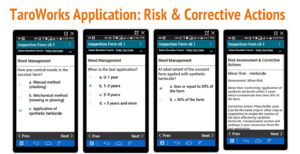
Search
From online reviews of enterprise software, to ethnographic studies allowing researchers to watch consumers use their dishwashers, businesses are constantly seeking consumer feedback to help drive innovation and improve support. Such for-profit feedback loops offer a model some nonprofits are also using to provide goods, services and data, which can help beneficiaries meet their needs or program partners make business decisions in real-time.
At the same time, mobile data collection and analysis technology is making it easier to close these feedback loops by allowing results to flow back to beneficiaries in the form of reports or benchmarks.
Dennis Whittle, a former World Bank economist and co-founder and CEO of Global Giving,has been studying and promoting the use of feedback loops in aid and philanthropy since at least 2013. Now Executive Director of Feedback Labs, Whittle believes:
“Promoting strong and timely feedback loops is key to making aid, philanthropy, and government initiatives more effective. Even in top-down programs, benevolent experts and government officials have an interest in knowing how well implementation is proceeding so that they can make midcourse corrections instead of relying on costly (expert) evaluations that come too late. But more broadly, feedback loops can also help us rebalance the way that development programs are formulated and conducted.” (Read More)
Managing the feedback process, however, isn’t easy. Marc Gunther, a journalist whose blog, Nonprofit Chronicles, covers nonprofit organizations and their impact, remarked in 2015 that asking for, receiving and then enacting change based on feedback is difficult.
“In theory, we want to learn, grow and change. In practice, not so much. We want to be loved for who we are. Nonprofits in particular are not as eager as they should be to listen, learn, grow and change.”
One popular corporate feedback tool is the Net Promoter Score. This technique, first developed in the 2000s by Bain & Company, seeks to answer why a product or service is or is not appealing to customers. Companies contact recent shoppers, asking them how likely they are, on a scale of 0 to 10, to recommend a product, service or brand to others. Such questions can certainly be asked by a social enterprise to a smallholder farmer who purchased their solar lamp a month before.
The Center for Effective Philanthropy surveyed nonprofits to discover that 95 percent of respondents said they collected feedback from the individuals they served. However, in another report, Charity Navigator spoke with 1,250 nonprofits and found less than 7 percent of respondents publish this feedback. A smaller portion of this 7 percent go on to look at how this feedback data affects their organization.
Creating effective feedback systems can be a complex process, Feedback Labs Executive Director Whittle concluded in an article written for the Center for Global Development. Before nonprofits can reach the fullest potential offered from feedback loops, Whittle stressed that there are a few questions organizations must first answer. These include:
Mobile data collection tools are dramatically changing the way nonprofits gather, analyze and apply customer, beneficiary and partner feedback. At TaroWorks, we see two feedback loops most often.
The first is raw field data collected from fledgling entrepreneurs, which can work its way back into improved products or services for those who originally supplied it. The second type of feedback system takes data in and returns analysis, which can help the original information provider (be they farmers or households) make better, quicker decisions about their business or qualify of life. The BOMA Project, Oxfam, Sistema Biobolsa and Grameen Foundation are among the TaroWorks customers providing such feedback.

As more nonprofits are asking questions of their clients or customers, they’re trying to refine the process for better results. Gunther highlights some experiences implementing a feedback loop at Center for Employment Opportunities, a New York-based workforce reentry program for people returning from incarceration.
A 2016 blog post written by researchers from the Global Public Policy Institute outlined findings from surveys of over 2,700 individuals who received help in Somalia, Afghanistan, South Sudan and Syria.
Among the concerns expressed by those who gave feedback were that communities rarely heard back from organizations after they provided such feedback and that aid workers only asked for feedback at certain stages of their relief efforts or projects. Overall, the study found nonprofits must be more comprehensive and strategic with their feedback techniques.
According to blog post authors Lotte Ruppert and Elias Sagmeister:
“Consulting people about the aid they receive is recognised as central to improving the quality of humanitarian assistance. This is particularly valuable in insecure contexts, such as Afghanistan and Somalia, where humanitarian staff have limited opportunities for face-to-face contact with the population. But are we communicating in an appropriate way, on the right issues, on a consistent basis and through the best channels? And what happens when aid agencies receive that information?”
POST TOPICS
Sign up to receive emails with TaroWorks news, industry trends and best practices.
TaroWorks, a Grameen Foundation company.
Site by V+V